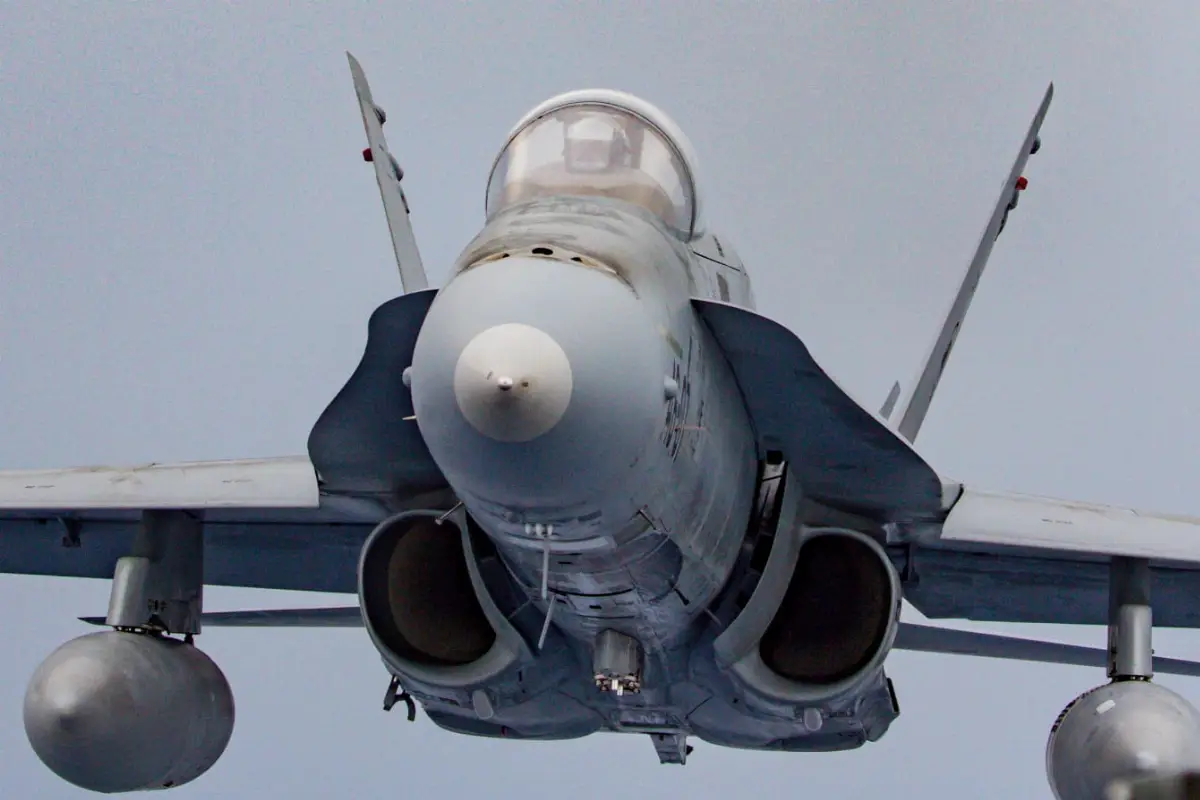
Spain begins its first deployment of F-18 aircraft in Iceland as part of a NATO mission
The six fighters will arrive at their destination today; the pilots are already on site; the contingent will be complete in a few days.

Stinga Detachment of the Spanish Air Force to reinforce air surveillance in the North Atlantic
For the first time in its history, the Spanish Air Force (AS) will deploy a detachment of F-18 fighter jet aircraft in Iceland, nicknamed "Stinga" (sting in Icelandic). This operation, part of NATO’s air policing program, strengthens the collective security of the Alliance in the North Atlantic amid the threat posed by unidentified aerial activities within and near allied airspace. As an advance guard and to prepare for the arrival of the six F-18 fighters that will form this new detachment, 44 airmen from various units of the Spanish Air Force are already in Iceland, under the command of Lieutenant Colonel Rafael Ichaso Franco, head of the air contingent and based at the 15th Wing, stationed in Zaragoza.
In a few days, the contingent will be complete: up to 122 military personnel, including pilots, mechanics, weapons specialists, logistics, security, and other support services necessary to carry out this mission will be deployed at Keflavik Air Base in southern Iceland. The arrival of the F-18s is scheduled for today, July 22. After a few days of preparation, they will be integrated into the NATO command structure on the 28th, thus beginning an operation that will last until mid-August.
Dat Stinga: protecting allied airspace
The mission Airborne Surveillance and Interception Capabilities to Meet Iceland’s Peacetime Preparedness Needs (ASIC IPPN) is a key component of the Persistent Effort operation and falls within the decisions agreed upon by NATO at the 2014 summit, following the illegal annexation of the Crimean Peninsula by Russia. On that occasion, the Atlantic Alliance implemented these enhanced and flexible security measures to demonstrate NATO countries’ determination to collectively defend the common allied airspace from any threat. In this context, the primary mission of Dat Stinga is to monitor and intercept aircraft operating without a flight plan, radio contact, or with a deactivated transponder, in order to guarantee the security of allied airspace. To this end, the Spanish detachment will remain on permanent Quick Reaction Alert (QRA) 24 hours a day, 7 days per week. Furthermore, during this deployment, scheduled training flights in the area will be extremely useful to maintain and improve the capabilities of pilots and crews, as well as the operational readiness of the F-18 fighters. Iceland, a NATO member country without its own air force, hosts rotating allied detachments tasked with protecting its airspace. Like Dat Stinga, all NATO contingents deploy to Keflavik, a strategic base in the North Atlantic critical for controlling intercontinental air routes. With this new deployment, Spain demonstrates and reinforces its commitment to international collective defense operations, expanding its presence beyond NATO’s eastern flank –where it has already operated in the Baltic, Bulgaria, and Romania– while projecting its operational capability into a new advanced aerial surveillance scenario.
Almost four meters tall, measuring 20 by 11 meters, weighing nearly 5,000 kilograms (with additional elements and payloads), flying at over 400 kilometers per hour, and with an operational altitude reaching up to 15,000 meters. This is the MQ-9 Predator B, the largest and most advanced drone of the Spanish Air Force, which only recently participated for the first time in a real mission to monitor one of Spain’s most strategic maritime zones: the area between the Strait of Gibraltar and the Strait of Sicily, encompassing the Alborán Sea and the waters east of the Balearic Islands. This first flight of the Predator in an operational mission was part of presence, surveillance, and deterrence activities (permanent missions in which the Armed Forces participate to protect areas of national sovereignty) in support of NATO's "Sea Guardian". Its mission on July 18 was to enhance allied intelligence and surveillance capabilities. The system was deployed from Talavera la Real Air Base (Badajoz) by personnel from the 233rd Squadron of the 23rd Wing of the Spanish Armed Forces, the unit responsible for operating it.
AVIONEWS - World Aeronautical Press Agency